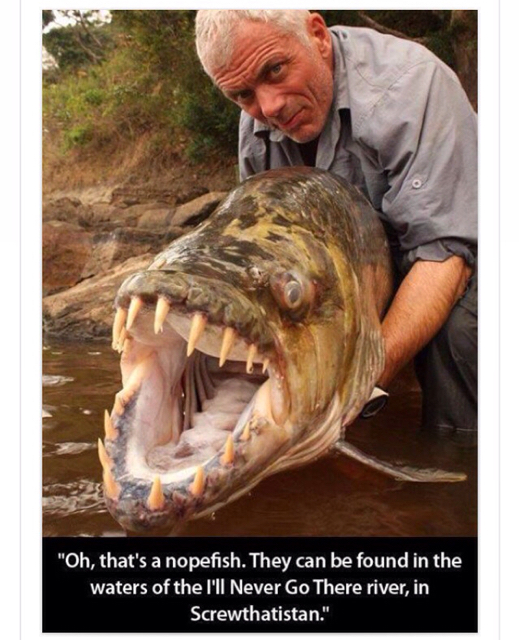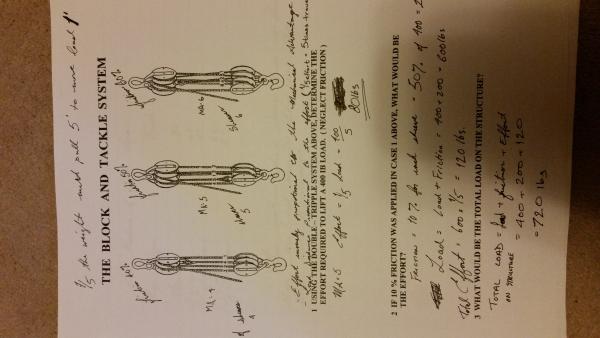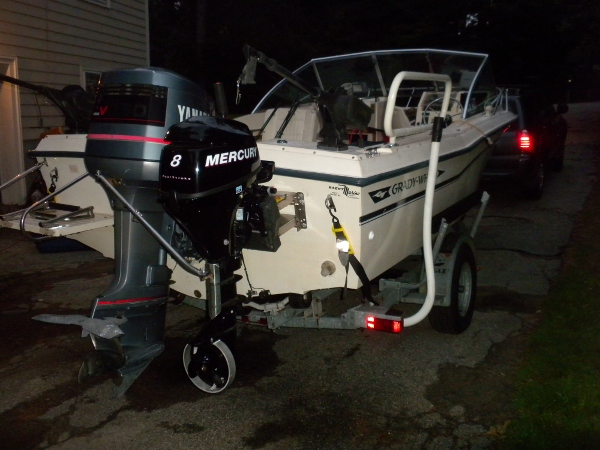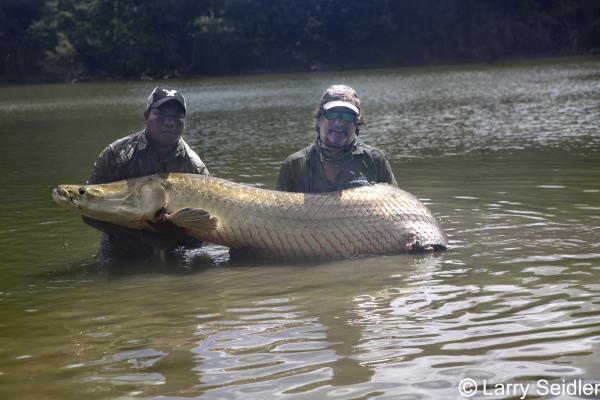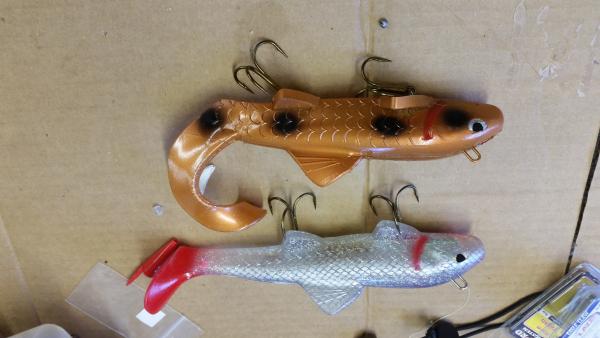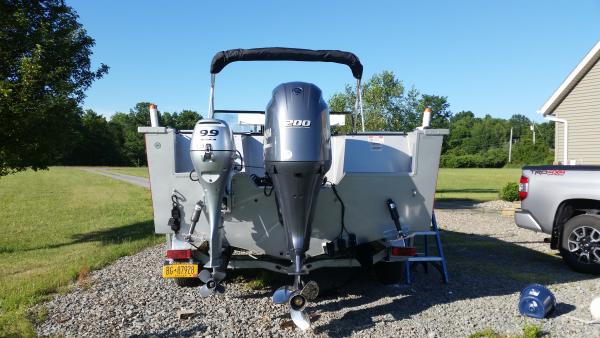-
Posts
1,074 -
Joined
-
Last visited
Content Type
Profiles
Forums
Events
Gallery
Store
Everything posted by muskiedreams
-

Musky Release Award Print
muskiedreams replied to choo-choo's topic in Musky, Tiger Musky & Pike (ESOX)
-
These things are all easier said than done but having discussions is the first step. Solutions might be more complicated than it seems. Even if more hard water anglers start releasing their fish or if increasing legal size makes them release more, if there is a lot of delayed mortality there may not be much positive impact. It is harder to determine if the fish swims away strong when you drop it into a hole in the ice. So releasing fish in ice fishing might not be as positive of a practice as it is with open water fishing.
-
Fluctuating voltage could be the culprit. When the motor runs, the voltage at the downrigger could be dropping. The voltage drop at the downrigger will depend on the wire gauge and length from the battery to the downrigger. It will also depend on how much current the downrigger will draw based on the amount of torque required to lift a particular weight (load). When the voltage drops at the downrigger, components on the control board may draw more current to compensate for the drop in voltage and cause premature failure of the board. CLICK HERE for guidelines on what your minimum wire gauge should be FOR EACH DOWNRIGGER based distance to battery and back and maximum current rating of the downrigger. If your wiring is up to par based on the guidelines, you should check the voltage at the downrigger and see how much it drops when you raise the weight. Even if you have the proper wire gauge, you are dealing with a marine environment and a device that draws a substantial amount of current. If there is a poor connection somewhere, it can cause a substantial voltage drop. Every connection needs to be clean, not corroded and tight. Another thing I was wondering about is if you are running off of a battery that is being charged by your boat motor charging system, the downriggers could be seeing a higher voltage from the charging system. That voltage could be as high as 15 volts. I would think the downrigger should have been designed to operate with under low or high voltage conditions to a certain extent but maybe a combination with a heavy weight as well is more than it can handle. I would imagine that trolling speed and bouncing on waves could also create added stress.
-
Wow I didn't know about the walleye stocking. The walleye stack up like sardines in the Conesus inlet at the south end of the lake. I don't know if for sure there is actually any natural spawning success but I think there is. I have heard that there are a few other smaller creeks they run up too. Is there any natural spawning success for walleye happening at Otisco? According to the 2014 stocking info for tigers that I mentioned above, Otisco got 11,000 at 8" and Conesus got 9,500 at 8,5" (1/2'larger) but Conesus is probably at least 5 times the size of Otisco. I have heard about tiger stocking programs in Ohio where they stock them at 12 to 14 inches. I believe that is the baitfish fund that Mike Money started. From what I understand, they had determined that it greatly increased the survival rate. If they scatter stock the tigers in open water at Conesus, it seems like the majority of them would end up as pike food and bird food. That just doesn't make sense to me. There are many good weed bed areas that would make more sense to stock them in. Unless they are also concerned about the largemouth eating them.
-
That is more something that would have to be done with management which might involve changing regulations such as size or creel limits. They don't stock pike in NY. Over harvesting might be a big factor but another question might be if there are any issues with the spawning/nursery ponds south of the lake.
-
Do you think it might be worthwhile to stock larger fingerlings and do you think pen raising also might help them to acclimate to their new environment so they can be more successful at avoiding predation? Also , do you think this is something that would be worth bringing up with the DEC. If so, who do you think we should talk to? I have no idea what they have done in regard to monitoring the tiger population or if it is something that would have to be done before considering a change. It sure would be nice if Conesus tiger fishing could be improved.
-
I have been very curios about answering this question and finding out if something can be done to improve tiger fishing in Conesus. It could have a little to do with number of anglers targeting them but I think it is more than that. There are quite a few locals who target walleye at night early in the season but I have never heard about them catching tigers while targeting walleye like at Otisco. Of course those guys seem to be somewhat quiet. The only stocking records I could find on the DEC site is from 2014. 11,000 8 inchers for Otisco and 9,500 8.5 inchers for Conesus. One thing I noticed that I was curious about, is that there was no listing in the Onondaga County table for walleye at Otisco. The Livingston County table showed 65,000 at 1.5 inch for Conesus. Does anyone know anything about that? Back to the question. Does anyone have any thoughts on why Conesus is not as productive? Are there any other differences between the lakes that could help explain why this is so. Is there any census or study data available from each lake that could shed some light. I am just thinking that it would be nice If something could be done to try to improve the tiger fishing there. It is deeper and much larger than Otisco. Also, it has pike and not pickerel and Otisco is the opposite. I don't know if that has anything to do with it. I am wondering if maybe stocking them larger there would help. Maybe it could be done by pen raising. If so, maybe a program could be done by involving SUNY Geneseo students or local anglers.. Does anyone else have any thoughts or ideas on this subject? Maybe we can bring this up to the Region 8 DEC office for consideration and get their thoughts on the subject. Since I can't go fishing now I might as well talk fishing. Sort of like Talking Dead. By the way, I don't watch Talking Dead or Walking Dead.
-
I agree with you Ivan. It has been an uphill battle with MI Chapter 69. The most difficult part is recruiting members who have or can develop a variety of talent and will actively contribute to creating and developing support and relationships between the fishing community and the DEC, the US dept of Fish and Wildlife, other conservation minded organizations including the SUNY ESF and other SUNY Universities as well as local community and economical development organizations. This may also include continually working to persuade those such as final flight to open their minds to what educated professionals in fisheries management have determined to be sound practices in fisheries management and not jumping to conclusions based on limited information or emotions. Things aren't always what they appear to be. Yes, sometimes mistakes are made, sometimes things happen that were not anticipated and may be difficult to determine cause (or causes) but I prefer to put my confidence in the experts. The system is far from perfect. Things happen slower than we would like but we have to work with it. I am also a member of the Niagara Musky Association which has been in existence for over 20 years. They have many admirable accomplishments under their belt but it has taken a lot of dedication from some key members who have specific talents or have through dedication developed those talents and applied them in a team effort with many other dedicated members in conjunction with cooperation with all the entities mentioned above. Nothing of this nature happens overnight. It takes planning, research, support, time and a cooperative effort.
-
I have an EZ-Steer (outboard to outboard). It works ok with my kicker on a motor bracket that raises up. I can leave it connected while using the main motor. I just raise the kicker bracket all the way up and tilt the kicker motor up to shallow water position (slightly tilted up). It doesn't hamper the main motor steering this way and once I am on plane, it is mostly out of the water. If your setup is such that you have to tilt the kicker all the way up when operating the main outboard or IO, it might hinder steering or be cumbersome. You might even have to disconnect the linkage when running on the main motor. If kicker is mounted on transom next to main outboard, you might be able to put a link across the front between the two motors. A friend of mine, who is handy with machining, made his own. There may be something commercially available but I am not sure. I am not familiar with electric options.
-

IF this would happen to Lake Erie... problem for Ontario too
muskiedreams replied to Sk8man's topic in Open Lake Discussion
I found this paper that was published last year that I think the author based the article on. http://www.glerl.noaa.gov/pubs/fulltext/2014/20140041.pdf It uses a computer model called Structured Expert Judgement (SEJ) which combines the judgements of multiple experts with varying backgrounds to try to create an unbiased result. The only thing is, the purpose was only to forecast the impact of asian carp on Lake Erie and their impact on only 4 species of fish in the lake. They are yellow perch, walleye, rainbow smelt and gizzard shad. It looks like SEJ model concluded that they will have a relatively small impact on the biomass of those species. I didn't read through all the data that was compiled and weighted so I will not make any comments on it except that it is all subject to and limited by the selection of variables that are used and there are many variables which cannot all be taken into consideration. I did read near the end of the Problem Statement that a few Bighead Carp have been captured in western Lake Erie but I haven't seen anything saying that they are reproducing there yet. It seems like it may be just a matter of time. What I don't understand is how they actually got there. I have not heard of any evidence of them in Lake Michigan, Lake Huron or Lake St. Clair. I wonder if blocking off the great lakes from the Mississippi R. would have even stopped them. Maybe the fry are hitch-hiking on birds. Maybe if they employed IBM's Watson they could come up with more certain conclusions and figure out an effective plan. It would really suck to have to go slow so you don't get knocked out by a fish. -

IF this would happen to Lake Erie... problem for Ontario too
muskiedreams replied to Sk8man's topic in Open Lake Discussion
It might be too dangerous to do that. It does affect some other important fish by weakening them. I think there is also the possibility of it mutating into a more dangerous strain. -

IF this would happen to Lake Erie... problem for Ontario too
muskiedreams replied to Sk8man's topic in Open Lake Discussion
Hope the computer model is wrong. -

South American Muskie 2016
muskiedreams replied to mostlymuskies's topic in Musky, Tiger Musky & Pike (ESOX)
-
That is probably not a simple question to answer. First you have to have an alternator and voltage regulator on your outboard that is capable. I have a 1990 mercury 75 hp. when I bought the boat in 1996, I installed a 3 bank charger that was set up to charge the batteries from the motor's charging system when the motor is running and it also plugs into ac power to charge with 20 amps per bank. There was a separate wire that connected to the charging system on the outboard to charge the two deep cycle batteries while under way. The first time I used it, the voltage regulator in the outboard fried almost immediately. I found out that the charging system on the outboard is only rated for 15 amps so I figured that it just couldn't handle the added load of the deep cycle batteries. I just disconnected that wire after I replaced the voltage regulator. So now it still charges the main battery while under way but I have to plug into ac power to charge the deep cycle batteries. So I think what it may all boil down to is if the charging system on your outboard has the capacity and is capable of charging all the batteries at once and/or if the charger can automatically switch between batteries to charge them in turn. I think a lot of the newer outboards are equipped with a more robust charging system for that capability. I am not sure if they all are but I know a lot of professional bass anglers have that capability on their boats. Many of them are running a 36v bow mount so the have 4 batteries including the cranking battery. I have heard about people with IOs or inboards adding an extra heavy duty alternator and voltage regulator to handle charging extra batteries.
-

South American Muskie 2016
muskiedreams replied to mostlymuskies's topic in Musky, Tiger Musky & Pike (ESOX)
-

Tiger burned to die on Otisco shoreline
muskiedreams replied to HybridHunter's topic in Musky, Tiger Musky & Pike (ESOX)
-
Incredible story and one very lucky fisherman. http://www.sctimes.com/story/news/local/sartell/2015/12/26/second-chance-angler-lived-after-20-minutes-under-ice/77473154/?autologin=&from=global&sessionKey=&utm_campaign=cision&utm_medium=social&utm_source=facebook
-

Invasive specie regulation - Comments?
muskiedreams replied to LongLine's topic in Open Lake Discussion
I wish they would have been more cautious about the herbicides treatments they have allowed the Waneta and Lamoka Lake Association do in those lakes to try and control the eurasian watermilfoil. Or maybe they need to monitor it more closely. From what I have seen in Waneta Lake, there doesn't seem to be any aquatic vegetation at all at depths of 5 ft or more and sparse from shore to 5 ft. I haven't seen what it is like at Lamoka Lake. I am concerned about the long term affects and if they may be causing more problems than they are solving. Vegetation is needed to maintain a healthy balance in the lake. -

What type of rod?
muskiedreams replied to skunked again!'s topic in Musky, Tiger Musky & Pike (ESOX)
Those kind of lures are used a lot for deep river jigging. Typically 15 to 20 fow.jigging just off bottom or dragging along bottom. You can also cast and jig or swim them toward the boat. Easiest to use with a baitcast rod and reel. Reel should be a musky size reel spooled up with 50 to 80 lb test braid. Power Pro is good.You can get away with a 7.5 ft med heavy to 8 or 9 ft heavy musky rod. Sometimes people troll with them but not usually. You will need extra long nose pliers and hook cutters. Other lure suggestions are large (6"+) spinners, spinnerbaits,and spoons. A few crankbaits in the same size range that you can troll or cast and twitch might also come in handy. -

Invasive specie regulation - Comments?
muskiedreams replied to LongLine's topic in Open Lake Discussion
The word "reasonable" is used in the first sentence and also other places in the text. Here is a link to the previous page on the DEC site which also has contact information to for public comment and also Impact Statement, etc. http://www.dec.ny.gov/regulations/2359.html At Lake George there is a particular clam that came from Asia that they are trying to get control over, among other things like eurasian watermilfoil. I am guessing that they are also monitoring that program to see what effect the efforts have controlling the eurasian watermilfoil and other invasives. It seems to me that it is going to be very difficult to effectively control invasives that are already here without finding natural enemies that will not have adverse impact elsewhere. For anyone who is interested, I ran across this 132 page report that was just published in July this year, that outlines an invasive species management plan. I am sure implementation of everything in the plan will not be possible unless new technologies provide solutions. It does make for some interesting reading on the subject. One thing that I think will be important going forward is that we all understand and, within reason, do our part to try to keep the problem under control, including spreading the word. New York State AQUATIC INVASIVE SPECIES MANAGEMENT PLAN -

Invasive specie regulation - Comments?
muskiedreams replied to LongLine's topic in Open Lake Discussion
Hopefully they will be reasonable in enforcement. The "visible to the human eye" wording could be misinterpreted unfairly. This will mean that you will have to make sure you clean up all the little pieces of weeds you pick off your lures that end up all over your boat. That is where I have a problem with the aforementioned wording. You might not be able to find and remove all the little bits of weeds in every nook and cranny inside your boat after each fishing trip. You could probably look in just about any boat after it is cleaned and find something that was missed. Also, it is hard to crawl under your boat to make sure you remove every little bit of weeds caught down there or caught between bunk or roller and hull. So there should be some wording that allows for reasonable effort. Here is some interesting wording under c) Treating, 1. Drying Method. iii. If the drying methods described in subparagraph (i) or (ii) above and the rinsing methods described in paragraph 2 below are not available prior to launching, towel dry portions of the watercraft hull, engine, trailer and associated equipment that have been in contact with the waterbody prior to launching in another waterbody; or Of course, how will they even know if you dried or rinsed your boat since you last used it unless they were watching you (Person of Interest). Now there is an exemption for those who launch at the same launch all the time but will they take your word for it when you go back to the same launch with weeds all over the floor of your boat? Will this cover you if you commonly launch at several launches on Lake Ontario in the same vicinity. What about if you mostly fish the upper Niagara River but decide to hit the Lower Niagara? I just hope they will be reasonable. -

Starcraft 210 Fishmaster Yamaha F 200 Performance issues Need Advice.
muskiedreams replied to Trorun's topic in This Old Boat
I assume you have gone through the break in period and followed the break in instructions since the motor will probably not give peak performance until broken in. I looked at the operator's manual for my Evinrude 15HP 4 stroke that I use for a kicker. In the installation instructions, it says that the anti-ventilation plate must be no higher than the boat's bottom and no lower than 2" below it when the angle is parallel with the bottom of the boat. i found the operator manual for your motor online but it doesn't go into any detail on mounting. I did do a little more research and found that it may vary depending on the boat and motor. Here is a You Tube link to a video where a guy was trying different heights and aluminum vs ss prop with a Yamaha 90 hp. In that you can see that the anti-ventilation plate is a little above the bottom of the hull. But it may depend on the hull or how flat the hull is at the transom and how high the hull is in the water when it is on plane. There is a few other You Tube videos there that you might want to look at. So changing the height may or may not make a difference. Doing it takes some time and you will probably have to reseal the bolt holes. It seems like Starcraft should already know what the optimum setup is for that motor on that boat including height and prop. Especially if is normally equipped at the factory that way. A good question might be: What motor is this boat normally equipped with from the factory? OR: How many of these boats have they shipped with this motor? (since there might be choices available). I would think that they have already done the testing to determine the best setup if it is a standard configuration. If so, they should be able to tell you the standard motor mounting specifications and what prop it should be equipped with so you can verify that it is all correct on your boat. I wonder if adding the bow mount and deep cycle batteries would have an effect on it but I wouldn't think it would make that much difference. Maybe it would make sense to try a 19 pitch prop. It would be easy enough to try. If the boat gets on plane real quick with the 17 pitch, that may be an indication that the 19 pitch would be more suitable. If it seems to be having a hard time getting traction at first or right after it planes out, maybe that would be an indication that the motor needs to be lowered.


